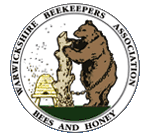The Asian Hornet Threat – Pollinators in Peril
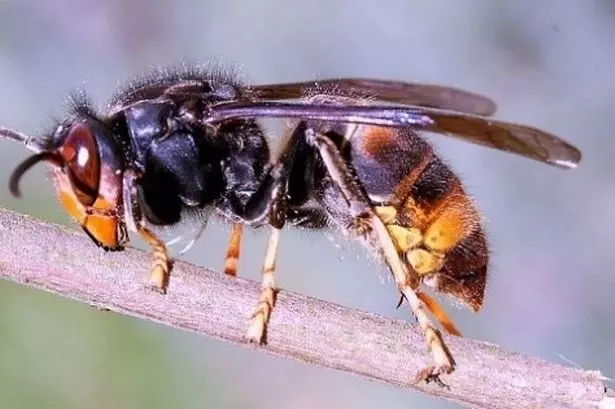
Asian hornets are an invasive, voracious predator of our pollinator insects including Honey Bees. Accidentally introduced into France in 2004, they have since spread Eastwards to Italy, South to Spain and Portugal and North to Germany Switzerland, Belgium, Holland and now, to the UK
2023 saw a massive increase in their numbers throughout Europe and, in the UK, from a yearly average of 2-3 nests per year up to 2022, 2023 saw 78 nests recorded, mainly in the South-East. We fear numbers will inevitably increase and, if they become established in the UK, from experience on the continent, they will have a devastating impact on our insect population, particularly on honey bees, on biodiversity, The already fragile balance of the ecosystem will be upset and pollinator services disrupted with consequences for flowering plants, food crops, and for creatures further up the food chain. There is also a risk of injury to ourselves from stings as, when provoked, they attack ferociously.
What is being done about it?
The National Bee Unit in the Animal and Plant Health Agency is at the forefront of an eradication campaign.
The Nation’s beekeepers have been mobilised and are now on full alert for new incursions but we need help required from the public by:-
- Joining with the nation’s beekeepers in spreading awareness of this pernicious threat.
- learning to identify Asian Hornets
- being vigilant when out and about
- reporting suspected sightings
Spreading the word
If you have connections with local gardening groups, garden centres, wildlife groups and outdoor activity groups etc., please spread the word by distributing leaflet, posters and cards. We have stocks of these available from our Asian Hornet Action Team co-ordinator which you can distribute to others.
We also have presentations and can provide speakers to give talks to organisations. Contact the WBKA Asian Hornet Co-ordinator on AH_coordinator@wbka.org.uk
But how do you identify them?

The Asian Hornet looks like a large black wasp with distinguishing features of a single yellow/orange band around it’s abdomen, orange face and yellow tipped legs. Queens are up to 30mm long, workers up to 25mm. They also have a deeper buzz than honey bees. Although the yellow tipped legs are often cited as a main identification factor, these may be difficult to spot in flight and the thick, yellow\orange band on the abdomen is a better indicator.
When and where can they be found?
Asian Hornets are easiest to see around flowers, on over-ripe fruit, carrion, close to water and, unfortunately, around bee hives from late spring through to late Autumn.
In spring, Queen Asian Hornets are active from after the last frost and will be looking to create a Primary Nest. These are typically low down in sheltered places e.g. under eaves of houses, in sheds, perhaps near last year’s nest.
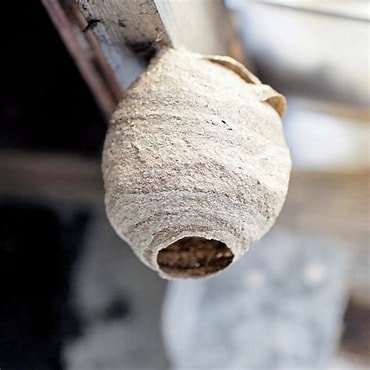
The primary nest is brown in colour, similar to a wasp nest, but smaller, they start the size of a golf ball and grow to the size of a small melon.
In Summer / Autumn – the hornets build a secondary nest, which is far larger than the Primary Nest, and can be as large as 80 cm in height and 50 cm wide.
These secondary nests are typically at an elevated position but increasingly below 5 metres in hedges, long grass and even in structures like buildings. It is often difficult to see these Secondary Nests until the leaves fall.
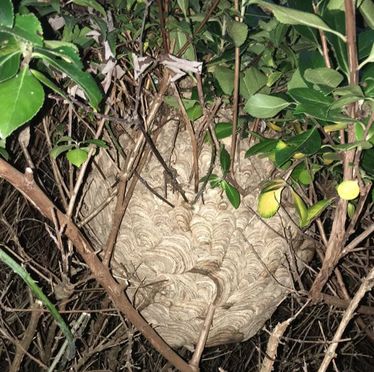
The Asian Hornets diet changes throughout the year and in summer they start foraging for protein. They can often be seen around dustbins, rotting fruit and at street markets where they are attracted by fish stalls and, of course, honey bee apiaries
What, and How, to report a suspected sighting
If you think you have spotted an Asian Hornet, please note its location, take a photo or better still make a video of it, if you can, and note the direction it flies off. Then report this to the Non-Native Species Secretariat (NNSS). This also is a part of DEFRA.
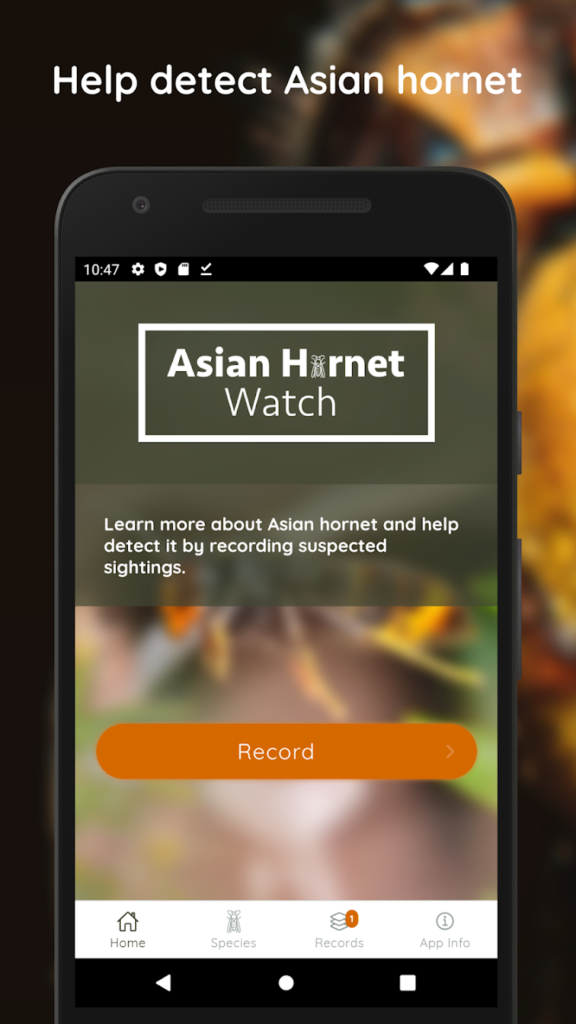
To report a suspected sighting, there is an App, The Asian Hornet Watch App,which is available on the Apple App Store and the Google Play Store. It offers a guide to identifying the insects as well as a means on to report a sighting.
Alternatively, you can send your findings to this e-mail address: alertnonnative@ceh.ac.uk
If the sighting is positive, further investigations by the Asian Hornet specialists will be triggered including tracking and tracing the nest and its eradication.
Can Asian Hornets sting?
They can and the sting is more toxic than a wasp sting. What’s more they can sting repeatedly. Generally, away from the nest they are not aggressive but become highly defensive if the nest is threatened in which case they attack ferociously and en masse. Nests in hedges and long grass can be disturbed accidently whilst, for example hedge cutting, retrieving cricket balls, by dogs and by other outdoor activities etc. Sports people, walkers, hedge cutters, tree surgeons and the like are particularly vulnerable to being stung.
The hornets tend to be less aggressive more than 30metres from the nest. So, when on the attack, the recommended action is to run further than 30metres away protecting exposed, vulnerable body parts as best you can.
NEVER DELIBERATELY INTERFERE WITH AN ASIAN HORNET NEST
Advice for Beekeepers
We have some specific advice for beekeepers on this page.
